
Pancha Prayag of Alakananda River grace the Garhwal region of Uttarakhand. They are the confluences of sacred rivers with Alakananda, the Adi Ganga or Vishnupadi River. Pancha Prayag are revered on par with Ganga.
The sacred river Alakananda traces its origin back to the Satopanth Glacier beyond Badrinath, from where it flows down through the Himalayas purifying the sacred land of Bharata. River Alakananda is known as Adi Ganga or the original Ganga. Since it is emanating from the lotus feet of Lord Vishnu, it is called as Vishnupadi. Just by having darshan of this river, one’s sinful reactions are destroyed – ikshaya alakanandaayaa vidhutaashesha kalmashah (Bhagavata Purana).
There are many rivers which pour their waters into Alakananda River and form confluences with it. Skanda Purana mentions that there are more than one crore branches of River Ganga within Himalayas. As these streams flow down, they keep joining each other and become a major river Ganga before getting into the plains. As per the Vedic literature, only five confluences have been considered most important, which are collectively called Pancha Prayag.
Each of these prayags is somehow or the other connected to the lila of the Supreme Lord due to which they obtain their sanctity over other prayags. Therefore, devotees visit them to cleanse themselves of the sinful effects of one’s life. They also go to help their ancestors attain liberation. Bathing in any one of the Pancha Prayag gives impetus to the devotional life of the seeker.
Pancha Prayag – the five confluences
Vishnuprayag
It is the first among the Pancha Prayag located in Chamoli District at a height of 4501 ft above the sea level. It is formed by the meeting of Alakananda and Dhauli Ganga River (also known as Vishnu Ganga). The Alakananda travels all the way from the Satopanth Glacier to meet the Dhauli Ganga River which originates in the vicinity of Niti Pass near the borders of Garhwal and South-Western Tibet.
The Dhauliganga travels 82 km from its origin to meet the Alakananda at Vishnuprayag. There is a temple called Vishnu Kund here where Sage Narada had worshipped Lord Vishnu and obtained blessings. It is located near Jyotirmutt which is one of the 108 Divya Deshams designated by the Azhwars of Sri Sampradaya.
Nandaprayag
It is the second prayag located in Chamoli District lying in a cascading sequence at a height of 4455 ft above sea level. It is formed by the meeting of Alakananda and Nandakini River (Origin: Trishul Mountain) at a distance of around 70 km from Vishnuprayag. This confluence is called Nandaprayag because Nanda Maharaj had performed penances here. This Nanda is different from the father of Lord Krishna.
It is known for the famous temple of Gopalji. There are temples of Lakshmi Narayan, Vishveshwar Mahadev Temple and Chandi Mata Temple too here. Read more
Karnaprayag
The third prayag which is in Chamoli District at a height of 4760 ft above sea level. It is formed by the meeting of Alakananda and Pindar River 22 km away from Nandaprayag. The Pindar originates from Pindari Glacier, which lies on edge of Nanda Devi, the highest peak of India.
Karna, the son of Kunti Devi performed his penances here to please Suryadeva and obtain boons. Karna Temple and Uma Temple are the two important temples here. Read more
Rudraprayag
The fourth prayag which is in Rudraprayag District at a height of 3000 ft above sea level. It is formed by the meeting of the Alakananda with the Mandakini River (Origin: Charabadi Glacier) 33 km away from Karnaprayag. Sage Narada performed austerities here to learn the art of music from Lord Shiva. Being pleased with the penances, Lord Shiva taught Sage Narada music in his form of Rudra.
Rudraprayag happens to be gateway to the two famous places of pilgrimage in Garhwal i.e. Badrinath and Kedarnath. The cave-temple of Koteshwar Mahadev on the banks of the Alakananda with beautiful foliage where Lord Shiva had meditated is a must visit.
Devprayag
The final prayag which is in Tehri Garhwal District at a height of 2723 ft above sea level. It is formed by the meeting of the Alakananda with the Bhagirathi River (Origin: Gomukh Glacier) around 66 km away from Rudraprayag in the cascading sequence. They combine to form the sacred Ganga River which flows down to the Gangetic plains of the Himalayas.
It is one of the 108 Divya Deshams designated by the Azhwars of the Sri Sampradaya. Brahmana named Deva Sharma had performed tapasya here and hence the name. This is the most important Prayag of all the Pancha Prayag of River Alakananda. Read more
Best Time to Visit Pancha Prayag
The summer season is the best time to visit. But woollens would be advisable in case it gets cold at night. Devotees travel in the winter season too, but the climate may not suit all, and the waters would be quite chilly especially at the prayags. Additionally, you should be prepared for roadblocks due to landslides or snow.
Unlike Badrinath and Kedarnath Temples, Pancha Prayag are accessible during all the seasons except Vishnu Prayag.
How to Reach Pancha Prayag?
The best way to visit Pancha Prayag and to have best darshan, choose the Pancha Badri Yatra and Char Dham Yatra conducted by Tirtha Yatra. These yatras are famous all over India for the fine and uplifting spiritual experience they deliver. Sattvic food, authentic sthala-purana narrations, accommodation, facility to perform sevas and more; a class apart!
If you want to visit on your own, you may follow the below steps:
By Air: The Jolly Grant Airport in Dehradun is the nearest airport to Rishikesh/Haridwar at 20/45 km respectively. But if you are looking at more cities in India and international destinations, the Indira Gandhi International Airport in New Delhi is your nearest airport. You can fly into there and travel further using the road or rail route.
By Rail: Haridwar Junction (HW) connects Pancha Prayag to all places across India. You can alight here and hire a taxi or board a bus.
By Road: State and private bus services connect Rishikesh/Haridwar with Dehradun, Mussoorie, and other cities in North India. Further on, you will find buses and taxis. The UTC (Uttarakhand Transport Corporation) bus station is right in front of the Haridwar Railway Station. Self-driven cars wouldn’t be a bad idea.
1
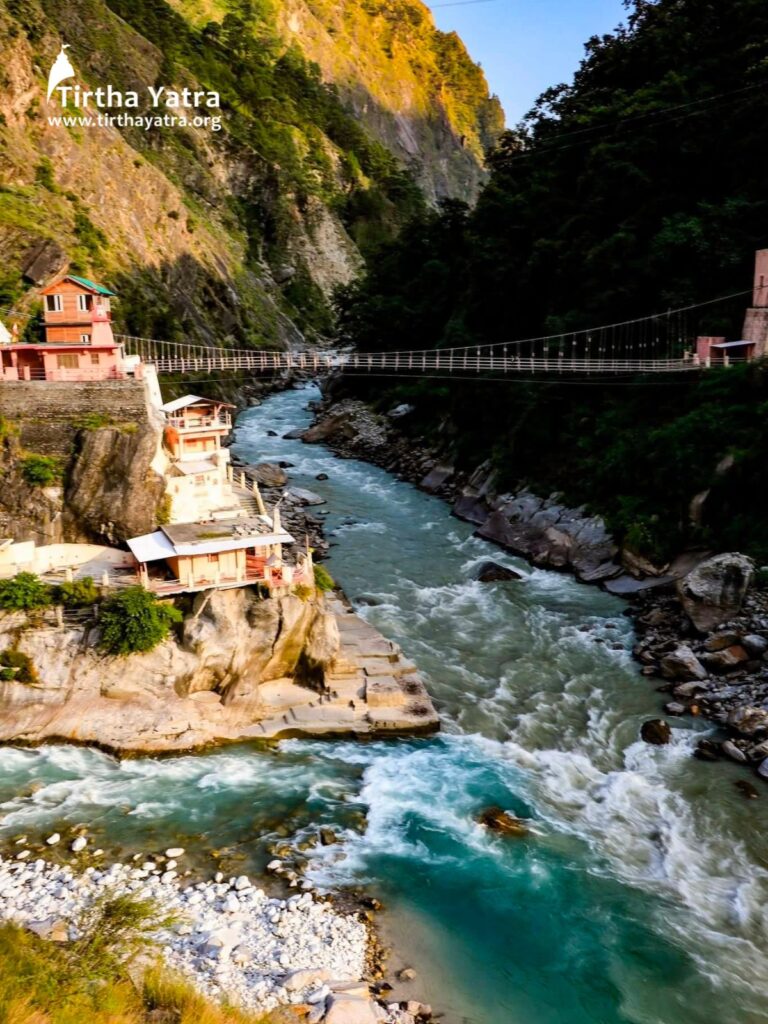
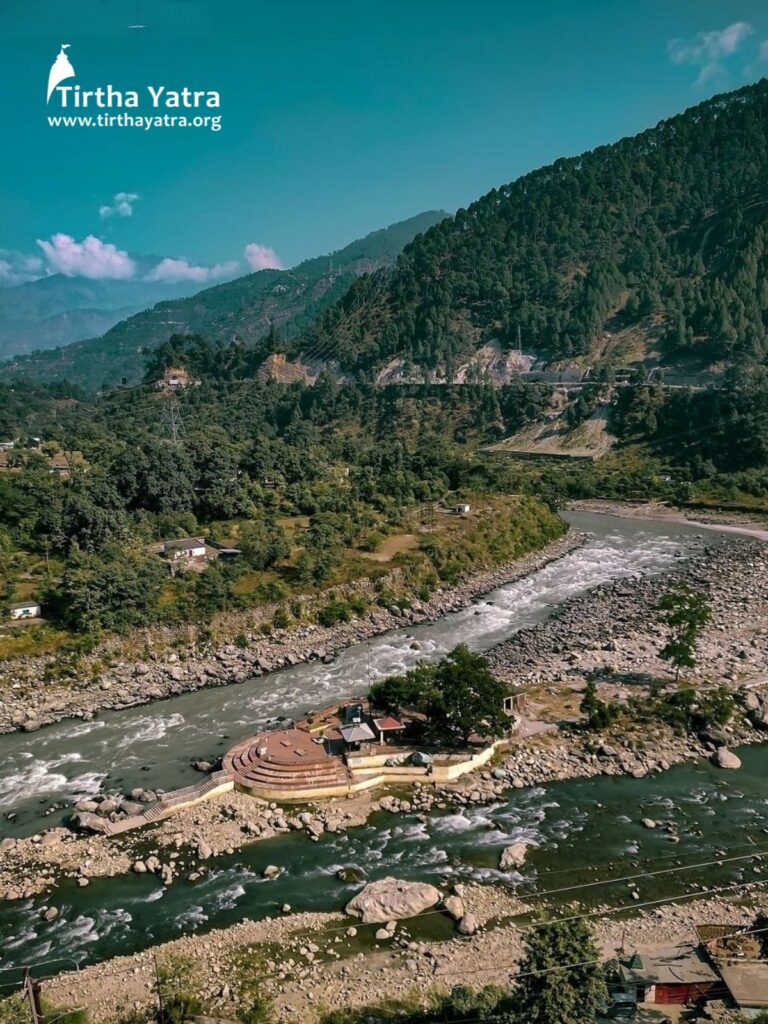
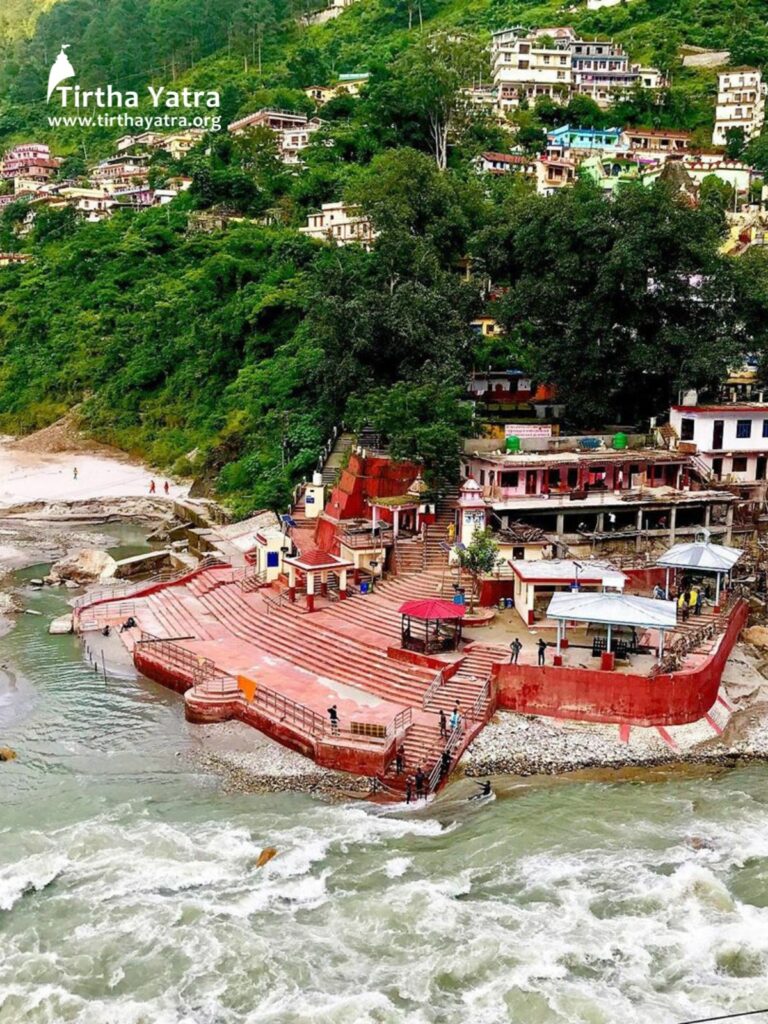
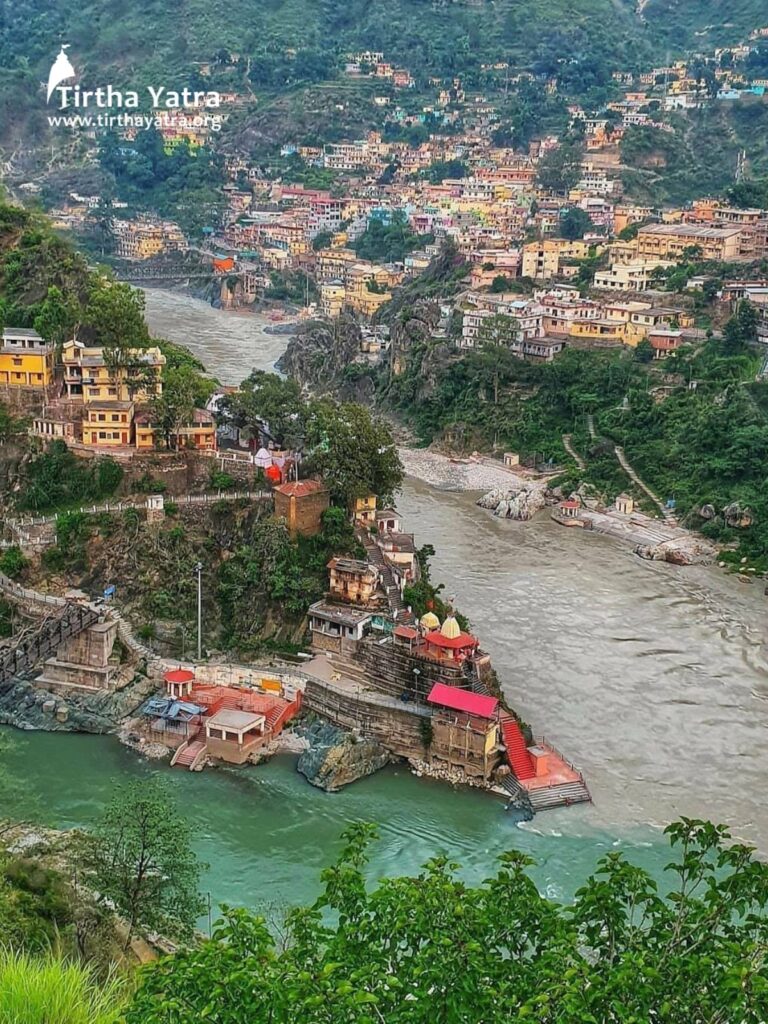
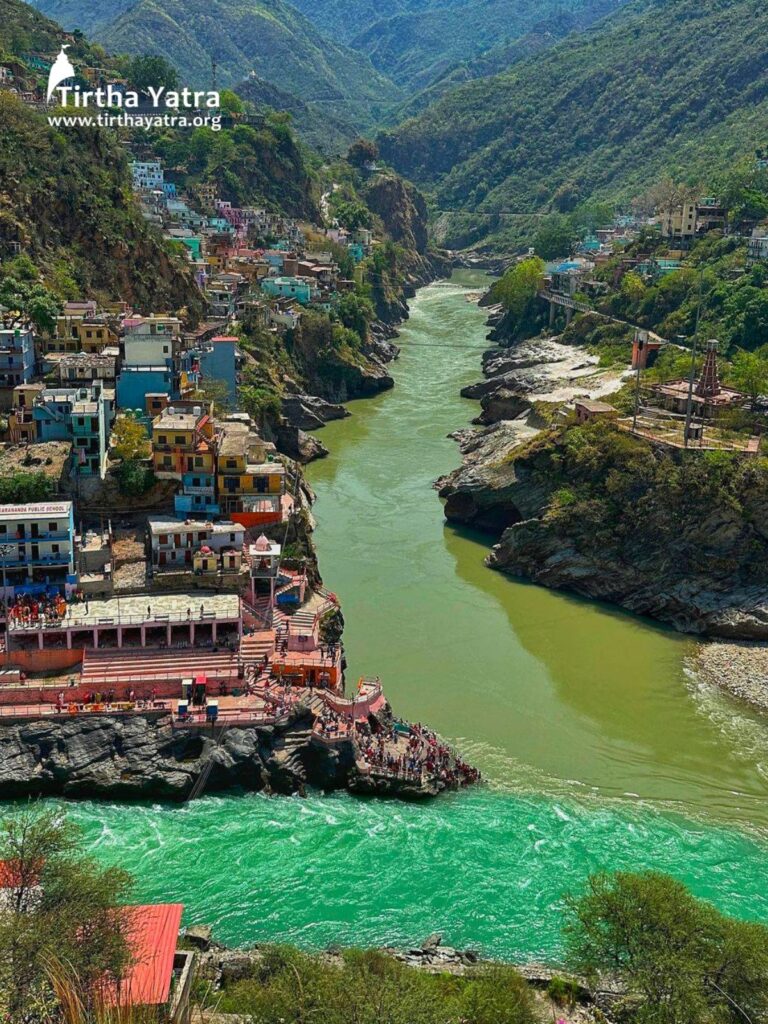
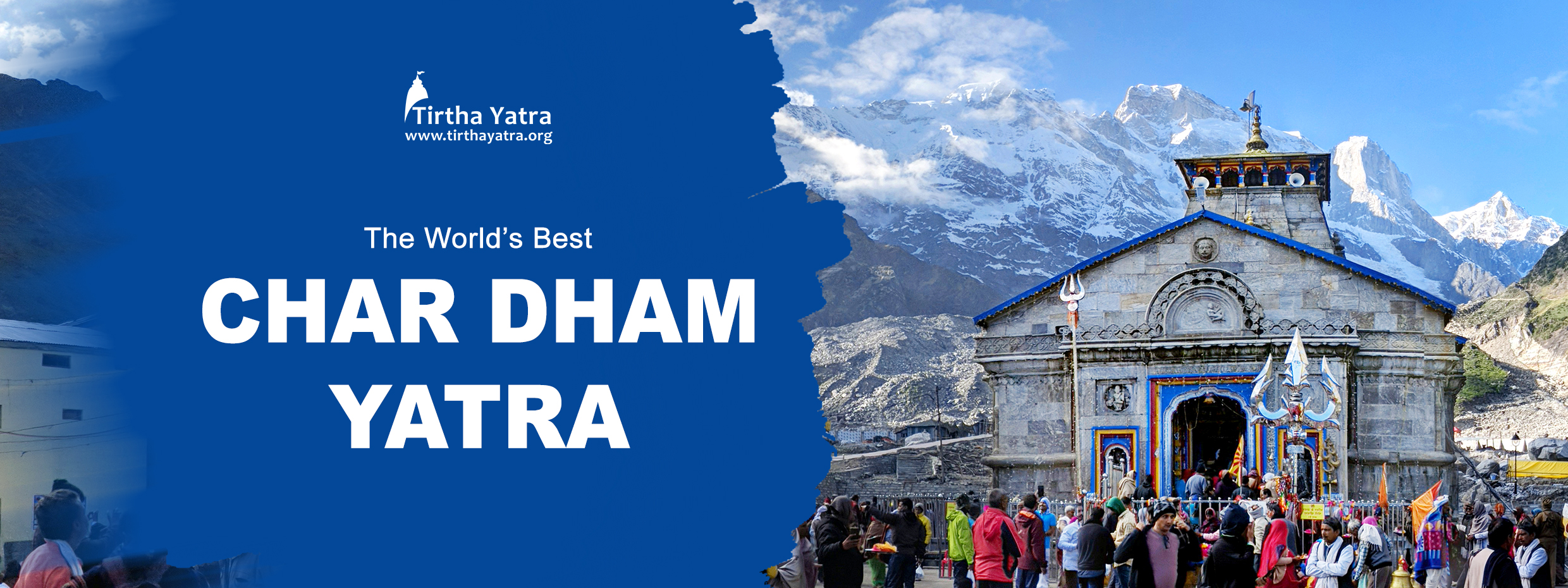










Comment On Pancha Prayag – the five confluences
M V N Suryanarayana Rao
Theertha Yatra is giving a lot of wonderful knowledge about the pious and spiritual places in Bhatathavani. We are knowing the importance of the piligrimage places which we are unaware. Thanks for uplifting the spiritual knowledge & Wisdom.